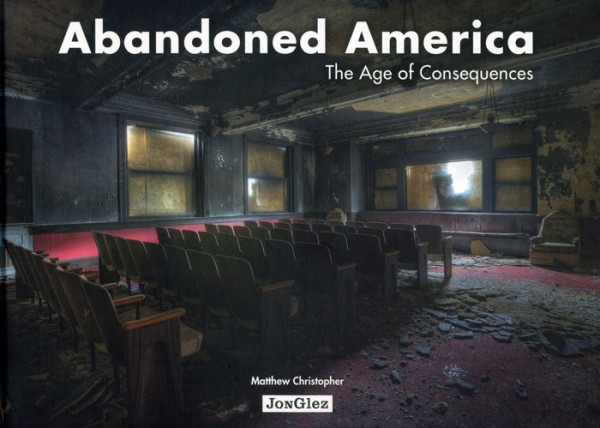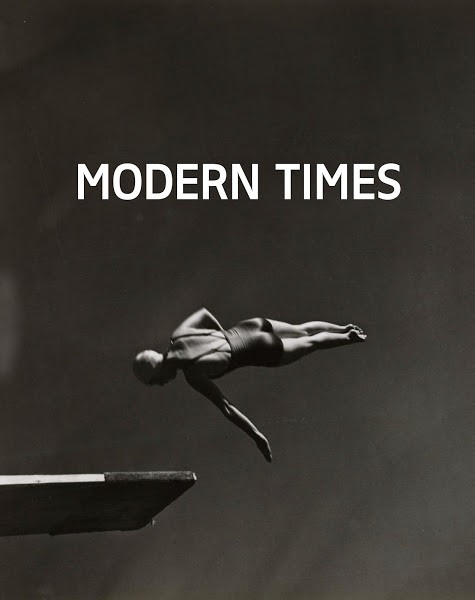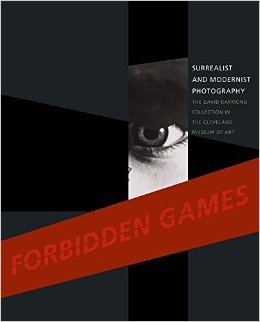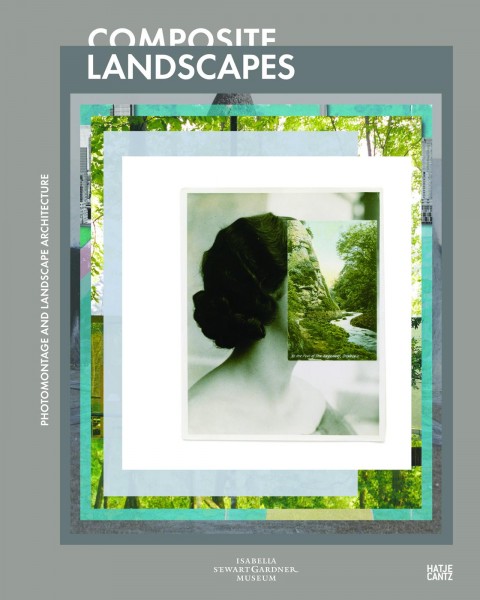Daguerreian Society Schedules Symposium and Photography Fair in Pasadena, CA for early Nov.; Early Bird Discounts End Soon
Paris Photo LA Renewed for 2016, But Why?
Pity the Poor French: Minister Of Culture Proposes Bureaucratic National Photography Council; Fires Controversial Head of Paris School of Fine Arts Precipitously
Photo Books: America in Disrepair, and Other Portrayals of Modern Times
Photographs for the Animal Lovers for Sale on I Photo Central

ABANDONED AMERICA: THE AGE OF CONSEQUENCES.
By Matthew Christopher. JonGlez Publishing. ISBN No. 978-2-36195-094-1; hardbound; 220 pgs.; approximately 100 color plates. Information: http://www.jonglezpublishing.com; info@jonglexpublishing.com.
The photography of ruins is one of the medium's earliest pursuits, yet capturing the image of the old and abdandoned never feels old. Our human fascination with relics of the past is strong, and so are Pennsylvania-based photographer Matthew Christopher's somberly toned and capaciously composed color images in this book. Christopher chronicles the countless former factories, prisons, churches, hospitals, schools and structures that haunt the American landscape in all their crumbling glory.
Glory, of course, is an oxymoronic notion in this case, yet Christopher's approach to the shells and silences of his subject matter approaches the transcendent. In several images, bright morning light floods the high arching windows of the abandoned St. Peter's Episcopal Church in Philadelphia's Germantown section, as if to suggest that God still eyes the family homes. Indeed, natural light finds its way, beatifically, into these images, whether of prosaic structures such as old Elks lodges or of such grim reminders of human frailty as Newark, NJ's Old Essex Prison, or Philadelphia's Holmsburg Prison, its psoriatic walls peeling between gorgeously rusted cell doors. And the left-behind bed frames and antiquated wheel chairs of hospitals or hotels tell genuine ghost stories.
But the real majesty of this portfolio lies in Christopher's images of the outsized factory ruins that are the legacy of post-industrial America: the coal and steel mills of Pennsylvania, and, perhaps most touchingly, the remnants of the Lebow Brothers Clothing Company in Baltimore, a vast complex in which hundreds of unsold men's coats still hang, astonishingly, above ripped and littered floors, and among old, bolted-down, praying-mantis-like Singer sewing machines.
Christopher writes eloquently of his project, which makes a clear enough point about the casualties of an American economy that has not so much transformed as unraveled: manufacturing has fled, prisons have gone for-profit, too many iconic schools have had to close. He bemoans our failure to successfully recycle these ruins, thus his subtitle, The Age of Consequences: "a point where our own actions over the past several decades are having catastrophic effects on our towns, our national economy and our environment." Despite the social subtext, Christopher notes, "At its core, the photography of ruins is fundamentally about death." Ultimately, this book is a beautiful eulogy to time's ravages.

MODERN TIMES: PHOTOGRAPHY IN THE 20TH CENTURY.
By Mattie Boom and Hans Rooseboom. Catalogue of the recent exhibition of the same name at the Rijksmuseum, the Netherlands. ISBN No. 978-94-6208-179-6/5 (paperback/hardbound). 340 pgs; approximately 300 prints. Information: publications@rijksmuseum.nl.
Despite the range and preeminence of the photography collections of America's great museums and institutions, the Netherland's Rijksmuseum is second to very few in its 20th-century photographic holdings, with some 30,000 works from the 20th century among the more than 150,000 photos in its collection.
In mounting this exhibition and catalogue, photography curators Mattie Boom and Hans Rooseboom have drawn from the many great examples at hand, beginning with the early modernism of Man Ray's and Laszlo Moholy-Nagy's experimental angularities, and moving rapidly to such signal works as Edward Weston's 1935 "Elbow," John Gutmann's 1936 shot of an Olympic high diver in mid-air, parallel with the diving board, and through examinations of disparate photographic themes.
Thus, the 1980s color revolutions of William Eggleston, Helen Levitt, Steve Fitch, and even Aaron Siskind are collected with such earlier color efforts as a 1910 autochrome image by Jacob Olie ("Fifi in the Woods," a remarkable vision of a little girl in a red dress in a verdant forest setting). And the seminal street photography of Emil Otto Hoppé, Alex Strasser and Brassai are joined with the mid-century photography of Robert Frank, Bruce Davidson, Joel Meyerowitz, Joseph Sterling, and others.
The connections are vibrant in each chapter, and the quality of the prints and the catalogue printing is uniformly excellent. The Rijksmuseum's collection may be vast, but its curatorial commitment is equal to the task, and the gems of the museum's holdings yield countless revelations. For example, Eve Arnold's languid candid of Marilyn Monroe at a gaming table during the shooting of her last film, "The Misfits," is the antidote to Edward Steichen's stagey 1931 portrait of Joan Crawford, and together these images establish the poles of celebrity photography, just as so many of the photographs in this catalogue tell us a great deal by dint of their scope and variety.

FORBIDDEN GAMES: SURREALIST AND MODERN PHOTOGRAPHY FROM THE DAVID RAYMOND COLLECTION IN THE CLEVELAND MUSEUM OF ART.
Yale University Press. Catalogue of the recent exhibition of the same name at the Cleveland Museum of Art. ISBN No. 978-1-935294-25-2; paperback; 240 pgs. Information: http://www.yalebooks.art; http://www.CleavelandArt.org.
The collector and filmmaker David Raymond assembled a superb grouping of surrealist and modernist photographs from the 1920s through the 1940s, and in 2007 the Cleveland Museum acquired 178 of them. This exhibition and catalogue reveal how the Raymond collection transformed the museum's holdings, since it lacked examples from that key period in the medium's history. As a result, important works from Hans Bellmer, Ilse Bing, Bill Brandt, Manuel Alvarez Bravo, Brassai, Duchamp, Magritte, Man Ray, Rodchenko and many others were added, triumphantly. With essays by Tom E. Hinson, Ian Walker, and Lisa Kurzner providing a rich context for the photos, the catalogue is an elegantly produced treasure trove.
And so there are important examples from the early heyday of modernism, the 1930s, when Dora Maar's daring studio work ("Forbidden Games," in all its shocking comedy), along with her street photography, connected with the earlier strains of photo-surrealism that Man Ray and others were pioneering (Raymond's 33 Maars were the largest number in private hands). Indeed, Lisa Kurzner's essay on "The Mannequin" notes how the surrealists' fascination with the culture of the mannequin and doll in theater, production, and commercial production had a strong influence on figurative photography, suggesting inner states and secrets.
Likewise, Marcel Duchamp's 1936 images of cigarette tobacco, revealed by unrolling the cigarette paper, suggests the inner nature of everyday objects in a perfect metaphor for surrealist thinking. Beyond such striking examples, Raymond's collection is rich in the horticultural and architectural studies--by the likes of Berenice Abbott, Rene Zuber, and others--that explored natural and man-made form from fresh perspectives, while the night images of Brassai focused on the demimondaine realities of Paris, and Roger Parry remade the still life by focusing on dirty dishes and the like.
If anything, Tom Hinson's essay on David Raymond himself reveals as much as the photos do, as he describes a collector who was captivated by photography at an early age and who went on to find a niche for himself in the gallery world, yet kept his focus sharp. "Raymond's journey shows how a private individual following a thread of interest can, over time, build a magnificently cogent collection by gaining knowledge about a period of art history and culture, developing personal taste to the point of trusting it, and then with skill and savvy traversing an ever-expanding and competitive art market."

THE EYE OF THE PHOTOGRAPHER: HIGHLIGHTS FROM THE FOMU COLLECTION.
FoMu Lanoo Publishing. Catalogue of the exhibition of the same name at the FotoMuseum Antwerp. ISBN No. 978-94-014-0504-1; 255 pgs.; paperback; approximately 100 images. Information: http://www.fotomuseum.be; info@fomu.be.
The Eye of the Photographer was an important exhibition when it opened at the FotoMuseum Antwerp--or FoMu--in part because it presented a broader selection of FoMu works than had been on exhibit in many years (FoMu has a 50-year history, with a world-renowned collection of photographic equipment).
This exhibit catalogue is actually the first in a planned series of publications about the FoMu collection, and it is a first-rate effort, since "The Eye of the Photographer" was a complex display with a very original thematic approach, as opposed to a more typically chronological perspective of photographic history. In this case, four possible visions of photography were presented: the objectifying versus the subjectifying, and the public versus the private.
Thus the objectifying emphasis of 19th-century photography on places and things, mainly architecture and landscape, to the 20th-century street scenes of Atget or Abbott–all the way to ominous objects such as John Davies' nuclear power station, photographed in 1982. The subjectifying perspective represents a far more personal view of the world, from the portraiture of Julia Margaret Cameron to Edward Steichen's, Alfred Steiglitz's, and Edward Weston's calculatedly abstract views, as well as the solarizations of Man Ray, the still lifes of Paul Strand, and the humanistic eyes of Diane Arbus or Bruce Davidson.
The public perspective ranges even more broadly, from the candid 1931 images of diplomats by Erich Salomon to the populist studio portraiture of the Midwestern U.S. photographer Mike Disfarmer, the early 20th-century tenement photos of Lewis Hine, and the many celebrity and commercial images that helped pay the rent for artists as disparate as Steichen (his immortal 1928 Garbo), Cecil Beaton, and Margaret Bourke-White (the great 1946 image of Ghandi).
The private perspective encompasses a good deal of objectification and subjectification, of course, but is marked by the depiction of daily lives and autobiography, from Nan Goldin's 1981 CIbachrome explorations of sexual identity to Nicholas Nixon's annual portraits of his wife and her three sisters ("The Brown Sisters"). All in all, this book offers a splendid deconstruction of photography's essence and its multiple aims.

BRIEFLY NOTED: Montage is a durable and supremely modern art form and also a key means of representation in landscape architecture, and the catalogue "Composite Landscapes: Photomontage and Landscape Architecture" examines the montage view from a select group of influential contemporary artists and a dozen of the world's leading landscape architects.
These composite views reveal practices of photomontage depicting the conceptual, experiential, and temporal dimensions of landscape. The landscape architects and artists presented include Yves Brunier, Claude Cormier, James Corner, Jan Dibbets, Charles Eliot, Teresa Galí-Izard, Isabella Stewart Gardner herself, as well as Adriaan Geuze, Booth Grey, Christopher Grubbs/Hargreaves Associates, Gary Hilderbrand, David Hockney, and Eadweard Muybridge, among many others.
Composite Landscapes was one of the most important and well received of a number of recent highly specialized exhibits at Boston's Isabella Stewart Gardiner Museum. The catalogue is a beautifully printed and contextualized effort, with essays from several global experts, and it thoroughly illustrates "the analog origins of a method now rendered ubiquitous through digital means."
In revisiting the composite landscape view as a cultural form, Composite Landscapes illuminates the contemporary status of the photographically constructed image. It may well be a landmark work for the field of design, landscape or otherwise. For more information: http://www.hatjecantz.de/composite-landscape-6130-1.html. With 216 pages and 136 illustrations.
Matt Damsker is an author and critic, who has written about photography and the arts for the Los Angeles Times, Hartford Courant, Philadelphia Bulletin, Rolling Stone magazine and other publications. His book, "Rock Voices", was published in 1981 by St. Martin's Press. His essay in the book, "Marcus Doyle: Night Vision" was published in the fall of 2005. He currently reviews books for U.S.A. Today.
(Book publishers, authors and photography galleries/dealers may send review copies to us at: I Photo Central, 258 Inverness Circle, Chalfont, PA 18914. We do not guarantee that we will review all books or catalogues that we receive. Books must be aimed at photography collecting, not how-to books for photographers.)
Daguerreian Society Schedules Symposium and Photography Fair in Pasadena, CA for early Nov.; Early Bird Discounts End Soon
Paris Photo LA Renewed for 2016, But Why?
Pity the Poor French: Minister Of Culture Proposes Bureaucratic National Photography Council; Fires Controversial Head of Paris School of Fine Arts Precipitously
Photo Books: America in Disrepair, and Other Portrayals of Modern Times
Photographs for the Animal Lovers for Sale on I Photo Central


Share This